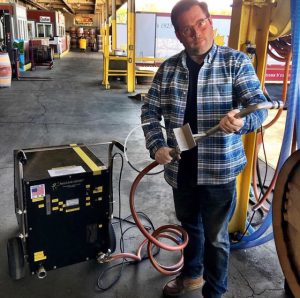Recent Posts
Archives
- October 2025
- August 2025
- June 2025
- March 2025
- February 2025
- November 2024
- September 2024
- August 2024
- April 2024
- March 2024
- January 2024
- December 2023
- November 2023
- October 2023
- September 2023
- August 2023
- July 2023
- June 2023
- May 2023
- April 2023
- March 2023
- February 2023
- September 2022
- August 2022
- April 2022
- March 2022
- December 2021
- November 2021
- October 2021
- September 2021
- August 2021
- July 2021
- June 2021
- May 2021
- April 2021
- March 2021
- February 2021
- October 2020
- September 2020
- August 2020
- July 2020
- June 2020
- May 2020
- April 2020
- March 2020
- February 2020
- January 2020
- December 2019
- November 2019
- October 2019
- September 2019
- August 2019
- July 2019
- April 2019
- March 2019
- February 2019
- January 2019
- December 2018
- November 2018
- October 2018
- September 2018
- August 2018
- July 2018
- June 2018
- May 2018
- April 2018
- March 2018
- February 2018
- January 2018
- November 2017
- October 2017
- September 2017
- August 2017
- July 2017
- June 2017
- May 2017
- April 2017
- March 2017
- February 2017
- January 2017
- December 2016
- November 2016
- October 2016
- September 2016
- August 2016
- July 2016
- June 2016
- May 2016
- April 2016
- March 2016
- February 2016
- January 2016
- September 2015
- August 2015
- April 2015
- February 2015
- January 2015
- December 2014
- November 2014
- September 2014
- July 2014
- June 2014
- March 2014
- June 2013
- July 2012
Categories
barrel care
FREE Barrel Care Class – March 9th at 10:00AM
Join us Saturday March 9th at 10:00AM for our FREE Barrel Care Class taught by our resident equipment expert Patrick Milio. Patrick will go over Barrel Care, Barrel Maintenance, and Barrel Aging.
Also, if you bring your barrel to class we will Ozone it for FREE (limit 1 barrel per person)!
We look forward to seeing you in class.
Please RSVP to cmusto@juicegrape.com to secure your spot in class.
Why Ozone your barrel?
Ozone makes your barrel the cleanest state that science will allow.
Using Ozone will also help retain oak character within the barrels and make them easier to swell.
The Winemaker’s Think Tank: Vol 3 – What’s the procedure to use a French Oak Barrel?
The Winemaker’s Think Tank?
Every Thursday we will post about a few frequently asked questions that our winemaker has answered. If you have a winemaking question you would like to have answered, please email us at support@juicegrape.com and we will try to get into next week’s post. Cheers! 🙂
What’s the procedure to use a French Oak Barrel?
Most wines will benefit from some form of bulk aging. Young wine tends to be a bit harsh, raw, and green and it needs some time to settle and round-out. Many wines, especially reds, will get better if aged in oak barrels. Oak barrels will impart unique flavors in wine and will also create subtle chemical changes over time. From vanilla and tobacco to tea and spice, different types of oak barrels will impart different flavors in the wine. However, all natural oak barrels will allow for micro-oxidation to take place – leading to reduced astringency, better color, structure, stability, and tannin integration, and a richer, more complex flavor and mouthfeel.
Yet as is true in most instances, better wine requires more work – and barrel care, maintenance, and ageing is no exception. Detailed instructions on how to inspect, swell, care for, and maintain an oak barrel can be found in our handy .pdf file here –> Barrel Care PDF. Once you have the basics down, we will go over some common questions about the aging process – starting with, “How long should I age my wine in a barrel and what styles are best for barrel ageing?”
The length of time a vintner ages their wine in a barrel depends on several factors. Is the barrel new or has it been used before? How large is the barrel? What style of wine is going into the barrel? New barrels will impart more flavors than used one will. A rule of thumb is that after a single use the oak extraction of a barrel will decrease by 50%. After the second use it will decrease by another 25%, and once the barrel has been used four times it is usually neutral – meaning it will not impart any oak characteristics into the wine.
Barrel size is also an important factor when determining how long to age your wine. Smaller barrels will impart oak flavors much more quickly than larger barrels. For example, while a 59 gallon barrel will hold nearly ten times the volume of wine as a 6 gal barrel, its surface area is only about twice as much. This means that the wine in smaller barrels has significantly more contact with the wood than wine stored in larger barrels and can be oaked five times more quickly.
Lastly, different varietals and styles of wine will require different aging times. A Cabernet Sauvignon or Bordeaux blend, for example, can usually be aged 1-3 years in oak. A New World-style Pinot Noir, however, probably shouldn’t be in a barrel for longer than 10 months. A buttery, creamy Chardonnay needs to be checked often while the ultra-tannic Nebbiola can stay in oak for over four years. However, remember that not all wines will benefit from barrel aging. Most German whites such as Gewurztraminer and Riesling rarely receive the oak treatment. Also, Beaujelea nouveau and many cold-hearty hybrids made in this style are often aged in stainless steel tanks rather than oak barrels.
So finally we can address the question on how long to age your wine in an oak barrel. The answer is up to the winemaker. Remember that winemaking is an art – and each artist will have their own inspirations and palates. My advice is to taste and to taste often. If using smaller barrels (less than 30 gallons), I would be topping off and tasting every month until the oak profile is where I want it to be. Larger barrels will take much longer to impart oak flavors, but still have to be topped-off monthly, so why not take a taste while adding wine to the barrel? Please note that it is much easier to add oak flavor to a wine than it is to remove it, so I recommend erring on the side of caution.
What about the wine going into the barrel? Should it be racked or filtered beforehand? In most cases your wine should be racked and stabilized before going into a barrel for bulk aging. For reds this means making sure your primary and malolactic fermentations are finished, the wine has been racked off its lees (we advise at least 2 rackings – once after primary fermentation, and then again as it is being transferred to the barrel), and it has been properly sulfited. Filtering your wine before it goes into a barrel may be a bit of an overkill, but one of our winemakers uses a course filtration before bulk aging and his wines are exceptional. However, there are unique winemaking techniques used by different vintners for certain styles. For example, in sur lie aging white wine is aged on its fine lees for an extended period of time. Obviously you would not want to rack or filter wines made in this style before starting the bulk aging process. Yet in most instances a wine should be clean and stable before going into a barrel. Additionally, the winemaker should not have to rack wine once it is in oak– save that step for when the wine leaves the barrel.
While aging wine in a barrel can seem like a daunting process, in most cases it is worth the extra effort. Just remember to taste often to avoid over-oaking, make sure the barrels are topped-off monthly, properly manage your S02 levels, and be patient – it will be time well spent.
We hope this information helps with your winemaking. If you have any follow up questions or winemaking questions in general, please email us at support@juicegrape.com.
Archives
- October 2025
- August 2025
- June 2025
- March 2025
- February 2025
- November 2024
- September 2024
- August 2024
- April 2024
- March 2024
- January 2024
- December 2023
- November 2023
- October 2023
- September 2023
- August 2023
- July 2023
- June 2023
- May 2023
- April 2023
- March 2023
- February 2023
- September 2022
- August 2022
- April 2022
- March 2022
- December 2021
- November 2021
- October 2021
- September 2021
- August 2021
- July 2021
- June 2021
- May 2021
- April 2021
- March 2021
- February 2021
- October 2020
- September 2020
- August 2020
- July 2020
- June 2020
- May 2020
- April 2020
- March 2020
- February 2020
- January 2020
- December 2019
- November 2019
- October 2019
- September 2019
- August 2019
- July 2019
- April 2019
- March 2019
- February 2019
- January 2019
- December 2018
- November 2018
- October 2018
- September 2018
- August 2018
- July 2018
- June 2018
- May 2018
- April 2018
- March 2018
- February 2018
- January 2018
- November 2017
- October 2017
- September 2017
- August 2017
- July 2017
- June 2017
- May 2017
- April 2017
- March 2017
- February 2017
- January 2017
- December 2016
- November 2016
- October 2016
- September 2016
- August 2016
- July 2016
- June 2016
- May 2016
- April 2016
- March 2016
- February 2016
- January 2016
- September 2015
- August 2015
- April 2015
- February 2015
- January 2015
- December 2014
- November 2014
- September 2014
- July 2014
- June 2014
- March 2014
- June 2013
- July 2012











Recent Comments